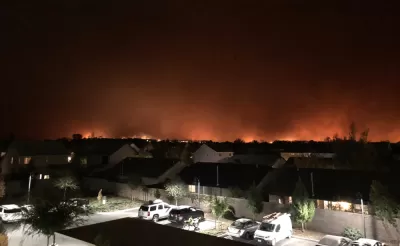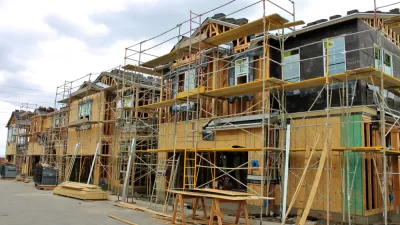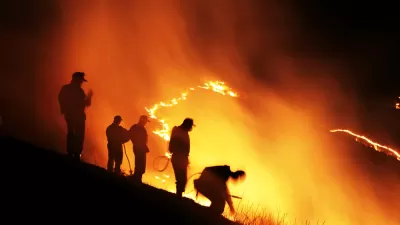New research points to global warming as the biggest factor in fueling longer, more destructive wildfire seasons.

According to new research published in the Proceedings of the National Academy of Sciences, climate change is now the primary driving factor for intensifying wildfire conditions in the western United States, reports Alex Wigglesworth.
The study found that "global warming was essentially two-thirds to 88% responsible for the atmospheric conditions fueling increasingly destructive wildfires," based on an analysis of the vapor pressure deficit. This tracks with other studies showing that 'fire weather days' are happening more frequently, creating longer, sometimes year-round fire seasons.
Fire agencies have had to pivot to new ways of fighting and preventing fires in this changed environment. They include everything from adopting new technologies such as drones and night-flying helicopters to redoubling efforts to focus on fuels management and community outreach and education.
California and the West have faced catastrophic wildfires in recent years, such as 2018's Camp Fire, which ravaged the town of Paradise, killing 85 people and burning roughly 153,000 acres. As fires grow more frequent and destructive, officials struggle to provide fire suppression resources stretched thin across multiple states and support homeowners. Last month, California's Insurance Commissioner announced that the state would bar insurance companies from dropping homeowners in fire-prone areas as an admittedly short-term fix to a growing crisis.
FULL STORY: Climate change is now the main driver of increasing wildfire weather, study finds

Study: Maui’s Plan to Convert Vacation Rentals to Long-Term Housing Could Cause Nearly $1 Billion Economic Loss
The plan would reduce visitor accommodation by 25,% resulting in 1,900 jobs lost.

Alabama: Trump Terminates Settlements for Black Communities Harmed By Raw Sewage
Trump deemed the landmark civil rights agreement “illegal DEI and environmental justice policy.”

Why Should We Subsidize Public Transportation?
Many public transit agencies face financial stress due to rising costs, declining fare revenue, and declining subsidies. Transit advocates must provide a strong business case for increasing public transit funding.

Paris Bike Boom Leads to Steep Drop in Air Pollution
The French city’s air quality has improved dramatically in the past 20 years, coinciding with a growth in cycling.

Why Housing Costs More to Build in California Than in Texas
Hard costs like labor and materials combined with ‘soft’ costs such as permitting make building in the San Francisco Bay Area almost three times as costly as in Texas cities.

San Diego County Sees a Rise in Urban Coyotes
San Diego County experiences a rise in urban coyotes, as sightings become prevalent throughout its urban neighbourhoods and surrounding areas.
Urban Design for Planners 1: Software Tools
This six-course series explores essential urban design concepts using open source software and equips planners with the tools they need to participate fully in the urban design process.
Planning for Universal Design
Learn the tools for implementing Universal Design in planning regulations.
Smith Gee Studio
Alamo Area Metropolitan Planning Organization
City of Santa Clarita
Institute for Housing and Urban Development Studies (IHS)
City of Grandview
Harvard GSD Executive Education
Toledo-Lucas County Plan Commissions
Salt Lake City
NYU Wagner Graduate School of Public Service





























